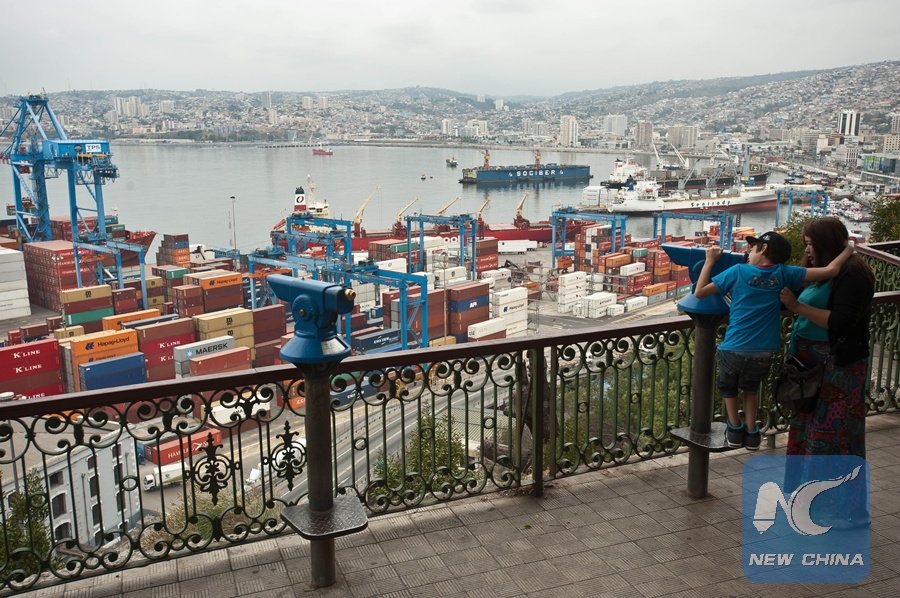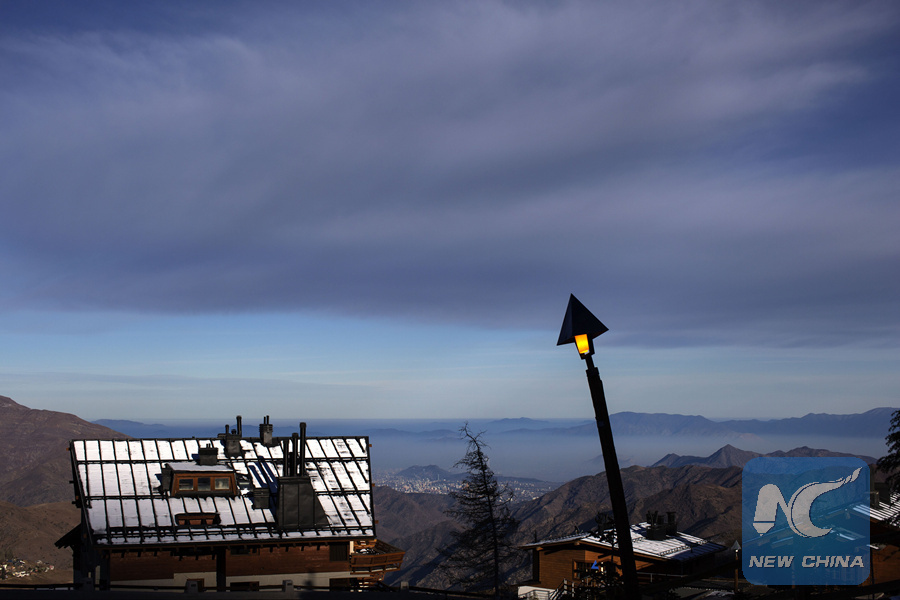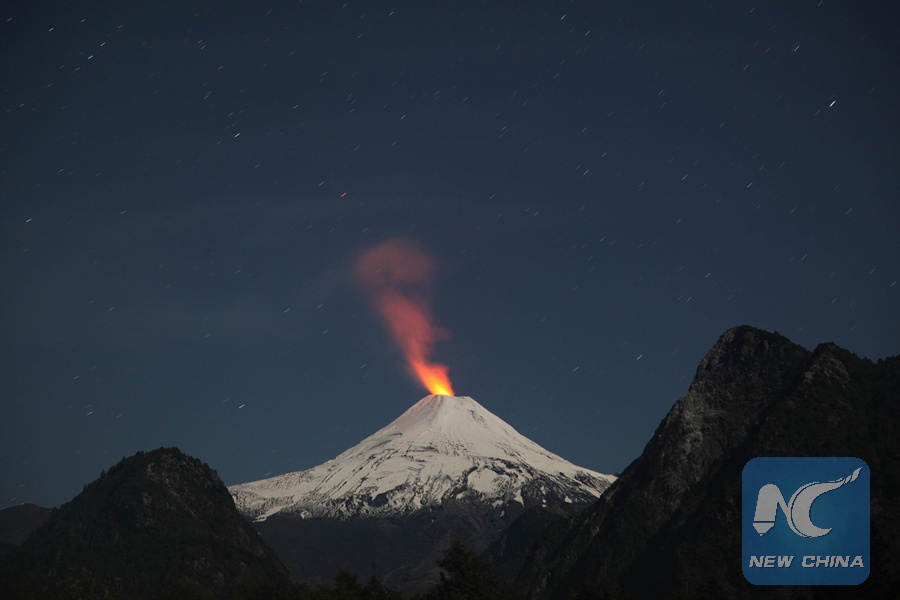
Image taken on Jan. 20, 2015, shows tourists looking at the Valparaiso Bay from the 21 de Mayo Viewpoint of the Artilleria Hill in Valparaiso city, Chile. Due to its architectural richness developed in the 19th century, Valparaiso was declared a World Heritage in 2013 by the United Nations Educational, Scientific and Cultural Organization (UNESCO). (Xinhua/Jorge Villegas)
Economic exchanges and other cooperation such as culture and tourism have been increasing between China and Latin American countries. Chile is one of them.
The long, narrow country between the Andes and the Pacific Ocean is a land of contrasts.
A string of volcanoes and lakes dot its southern regions, while in the north there is the arid Atacama Desert, selected as one of the 10 must-see regions for 2015 by Lonely Planet. It is also rich in copper, a major export for Chile.
Wu Yuanfeng, a businessman who often travels between Chile and China, recalled how stunned he was when he saw the sunset fall over the Atacama Desert.
"The sunset lasted really long, surrounded by a splendid evening glow...The Atacama Desert is the world's driest desert. Its sand is the purest," he said.
Yet for many Chinese visitors, the mysterious giant statues on Easter Island are all they know about the South American country.
About 11,000 Chinese visited Chile in 2014, up from just 6,000 in 2008, according to official data from Chilean tourism authorities.
The increase is striking, but still relatively tiny considering the fact that Chinese citizens made more than 100 million overseas trips the same year.

Photo taken on July 7, 2015 shows the view of the ski resort La Parva, in the Andes mountains, northeast of Santiago, capital of Chile. (Xinhua/Guillermo Arias)
To attract more Chinese visitors, Chile now waives visa application fees for Chinese tourists, and those who hold visas for the United States or Canada that are valid for more than six months can enjoy visa-free access to the country.
With the loosening of visa requirements, Chile expects to see a 40-percent increase in the number of Chinese tourists every year.
China and Chile also have maintained a close trade relationship over the past decade.
In 2005, Chile became the first state in Latin America to sign a free trade agreement with China. Since then, the bilateral trade volume has grown four-fold in ten years. China is now Chile's biggest trade partner.
While copper has always been Chile's main raw material export, its non-copper exports have been on the rise, accounting for one-fifth of the country's total exports to China since 2014.

Photo taken on April 18, 2016 shows the Villarrica Volcano in the region of La Araucania, Chile. (Xinhua/Str)
Chile was the top supplier of fresh cranberries and cherries to China last year, and 77 percent of China's whole salmon and fresh plum imports come from Chile.
Beef, lamb and wine imports are also gaining popularity.
Rapid economic development in China over the past decades has created a strong middle class that isn't afraid to spend on food, fashion and travel.
In 2009, the Chilean chemical mining company SQM invested 14 million U.S. dollars to build a fertilizer company in Chengdu in partnership with China's Migao Corp. This year, Chengdu's Tianqi Lithium Co. Ltd invested about 300 million U.S. dollars in establishing a mining and chemical company in Chile.
Chinese companies have also trained skilled workers from Latin America.
"We have trained for free hundreds of professionals in engineering, construction and management from Chile, Peru and Venezuela," said Tan Meng, senior engineer with China Railway Eryuan Engineering Group Co. Ltd.

German artist Edgar Muller works on his 3D painting at the 4th Festival of Urban Interventions themed "Made at Home," in Santiago, capital of Chile, on Nov. 10, 2016. (Xinhua/Jorge Villegas)
Last month, ambassadors to China from four Latin American countries expressed hope for more cooperation with western China at a conference.
"We look forward to establishing more cooperation relationships with the region in energy, infrastructure, agriculture and tourism," said Jorge Heine, rotating president of the Pacific Alliance and Chile's ambassador to China. "We also welcome more companies from western China to invest in Latin America."
The ambassadors also briefed investors on agriculture, infrastructure and manufacturing in their countries.
Cherries have in recent years become a mainstay of trade between Chile and China, with Chilean cherry growers reserving a large part of their harvest for the Asian market.
That's the case with Rucaray, a cherry grower in Rancagua, a town about 100 km south of the capital Santiago, which has been exporting cherries to China for 14 years.
The company, which ships as much as 82 percent of its crop to China, boasts a modern processing plant that employs mainly women to clean and pack the fruit.
Ricardo Vial, commercial director of Rucaray, told Xinhua that business with China has led to the "great development" of its planting fields along with increased employment.

